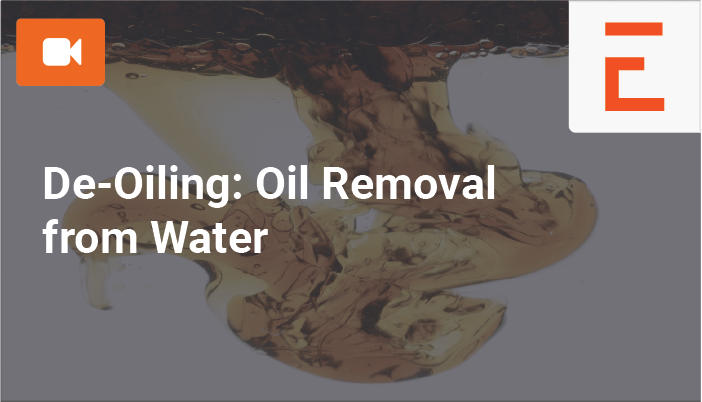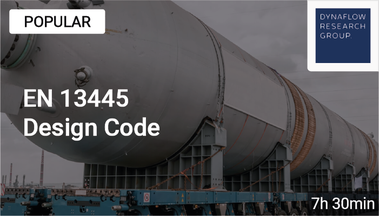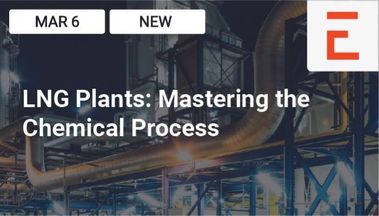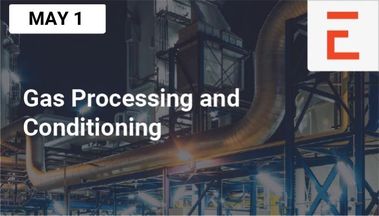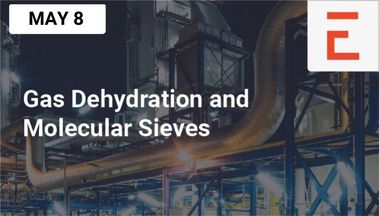De-Oiling: Oil Removal from Water
Self-Paced Course
10 modules
3.5 hr Content
Moe Toghraei
SPC1801
Format:
On-demand
€220 For Teams
Get a 20% discount on all courses for you and your team.
Free Course Preview
Help yourself with your purchasing decision. Watch free content now.
Course Objective
"This self paced course teaches participants the methods and techniques used to remove oil from oil-in-water mixtures. "
Learn from home
100% online training
Video Lectures by Experts
connect with them online
1 Year access
to recordings and material
PDH Hours qualified course
Read more here
About the course
Self-paced
10 modules
3.5 hours
English
1yr access
SPC1801
Removing oil from water is an important part of water treatment and is an essential step in allowing water to be safely released back in to the environment.
This self-paced course explains the industry standard methods of removing oil from oil-in-water mixtures. Different modes of oil presence in water are explained and the influence of these modes on how to remove the oil is detailed. The main unit operations for deoiling, such as API separators, Skim Tanks, flotation methods (Dissolved Gas Flotation, Dispersed Gas Flotation), Oil Removal Filters, Centrifuges, Hydrocyclones, Coalescers, and Demulsification methods are explained. Participants are shown the range of application of a given method, together with the advantages and disadvantages.
The course consists of 10 online modules based on video lectures. All training content is provided through your EngineeringTrainer account.
After the course you have unlimited access to the course for 1 year, including any new course material. This allows you to perform modules again should you need to refresh your knowledge for your projects.
Questions? Contact us
hello@engineeringtrainer.com
+31 (0)85 058 0051
Monday - Friday, 9am - 6pm CEST
Meet your instructor
Program & Details
Welcome to the course
Your instructor
How to use this course
Personal Certificate requirements
Source of Oily Waters
Effect of Oily Water on the Environment
Effect of Oil in Water on the Process
Oil in Water vs.Water in Oil
Different Forms of Oil Droplets
Samples of two modules are available for free, so you can learn more about the teaching style and understand if the course fits your needs.
Sampling
Specification of Oily Water
Total Oil Content Measurement
Oil Content Classes
Oil Content Measurement Basis
Oil Content Parameter
Oil Globule Size
Oil Size in Water Spectrum
Emulsions
Shear Sensitivity
Principle of Oil Removal
Oil Removal by Creaming (Gravity Separation)
Considerations for Gravity Separation
API Separators
Creaming Equipment
Skim Tanks
Samples of two modules are available for free, so you can learn more about the teaching style and understand if the course fits your needs.
Gas-Assisted Oil Removal
Considerations for Flotation
Bubbling Gas
Dispersed Gas Flotation
Flotation Vessels
Eductors
Agitator/Mechanical Separators
Range of Application
Operation
Hydrocyclone Structures
Multi-Hydrocyclones
Vessel Hydrocyclones
Types of Centrifuges
Horizontal Scroll Type (Decanter)
Range of Application
Different Types of Oil Filters
Filtering Media
Filtering System
Effect of TSS (Total Suspended Solids) in Filtration
Membrane Oil Filtration
Plate Coalescing Mechanism
Different Types of Coalescer
Shallow Seperators
Demulisification Methods
Heat Demulisification
Flame Demulisification
Demulsifier Injection
Organic Removal
Adsorption
General Overview
Quiz
Congratulations
Course evaluation survey
Your Personal Certificate
Rate this course
Related resources & follow up
Results
After this course, you...
understand how to classify oil in water; parameters to define and how to measure
have seen how to remove oil through gravity separation by creaming, and when this can be done
know the concept of oil removal through flotation and the impact of eductors and mechanical agitators on this process
understand the working principle of hydrocyclones and centrifuges
have a good overview of the filtration methods that can be used for deoiling
have learnt how dissolved oil can be removed through demulisification
Who should attend this course
Those involved in de-oiling design and operation:
Process engineers
Mechanical Engineers
Material Engineers
Operation Leads
Project Managers
Planners
Prerequisites:
Affinity with (waste) water treatment is beneficial
Level: Intermediate
Access to the course.
After your purchase is confirmed it will be activated to your account on the EngineeringTrainer learning portal. Here you will find the course in your dashboard and you will be guided step-by-step through the different course modules. You receive 1-year unlimited access to the course. This allows you to perform modules again should you need to refresh your knowledge.
Learn by doing.
The course is based on video content with video lectures given by the instructor. The videos can be viewed as many times as desired and these video lectures will help you to grasp the important technical concepts.
This course is self-paced and is not subject to specific dates. The course contains 10 modules with a total of 3hr 30mins of content which can be performed at your own pace. A Personal Certificate will be provided to participants if they finish the course within the first month after purchase. This incentive will motivate you to perform the course quickly thereby improving your learning curve.
You receive 1-year unlimited access to all modules, should you wish to refresh your knowledge.
Participants of this course receive a personal digital certificate if they meet the following requirements:
have completed each module of the course,
fill in the Course Evaluation Survey.
Example Certificate:
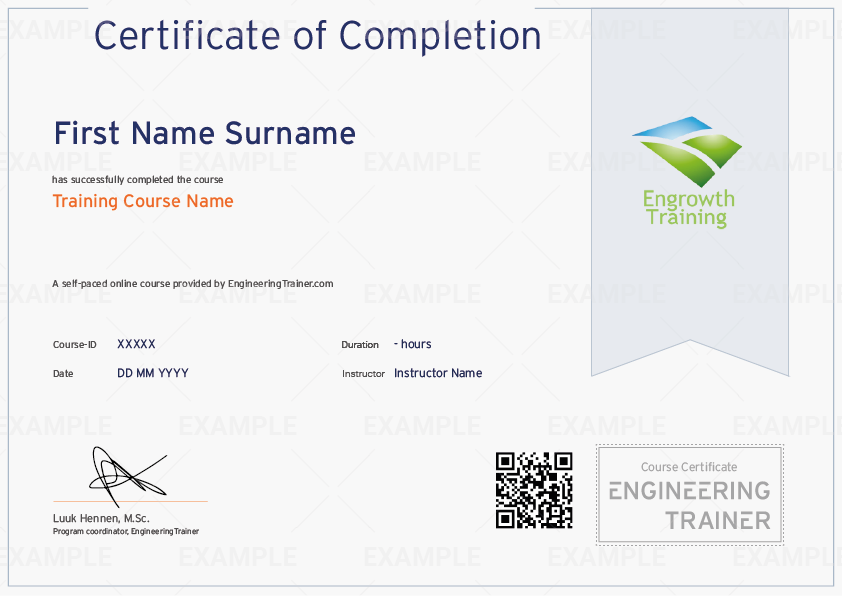
FAQ
Recorded video lectures given by the instructor
The training videos are not available for download, but can be accessed directly with your account on the portal.
You receive 1-year unlimited access to the course, which allows you to watch content again.
No, it is not possible to ask questions to the trainer. It is possible to submit comments and ideas for new topics and modules.
No technical software is required for participants of this course.
If your computer and internet connection is able to play videos online (YouTube) you will be able to follow the course. Note that almost all browsers are supported, except for Internet Explorer.
Yes, this course qualifies for PDH hours as per the NCEES CPC Guidelines.
